
The Sega CD, known as Mega-CD in most regions outside North America and Brazil, is a CD-ROM accessory for the Sega Genesis produced by Sega as part of the fourth generation of video game consoles. It was released on December 12, 1991, in Japan, October 15, 1992, in North America, and April 2, 1993, in Europe. The Sega CD plays CD games and adds hardware functionality such as a faster CPU and graphic enhancements such as sprite scaling and rotation. It can also play audio CDs and CD+G discs.
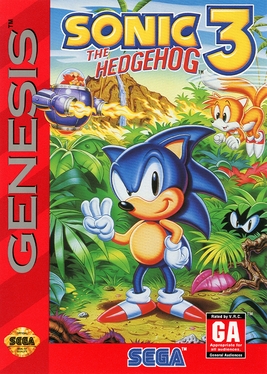
Sonic the Hedgehog 3 is a 1994 platform game developed and published by Sega for the Genesis. Like previous Sonic games, players traverse side-scrolling levels while collecting rings and defeating enemies. They control Sonic and Tails, who attempt to retrieve the Chaos Emeralds to stop Doctor Robotnik from relaunching his space station, the Death Egg, after it crash-lands on a mysterious floating island. Sonic 3 introduces Knuckles the Echidna, the island guardian, who lays traps for Sonic and Tails.

Dr. Robotnik's Mean Bean Machine is a falling block puzzle game developed by Compile and published by Sega. It was released for the Sega Genesis / Mega Drive in North America and Europe in November 1993, and ported to the Game Gear in 1993 and Master System in 1994.

Ecco Jr. is a video game in the Ecco the Dolphin series, released by Sega in North America in April 1995 and in Australia in November 1995. It has the controls and basic gameplay of the other two Mega Drive/Genesis titles, but is geared towards younger players, lacking the high difficulty of Ecco the Dolphin and Ecco: The Tides of Time.
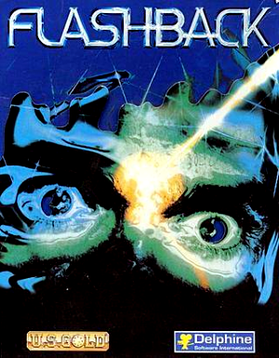
Flashback, released as Flashback: The Quest for Identity in the United States, is a 1992 science fiction cinematic platform game developed by Delphine Software of France and published by U.S. Gold in the United States and Europe, and Sunsoft in Japan.

Streets of Rage 2, known as Bare Knuckle II in Japan, is a 1992 side-scrolling beat 'em up video game published by Sega for the Genesis/Mega Drive. A sequel to Streets of Rage (1991), the characters Axel Stone and Blaze Fielding return while the game also introduces two new characters: Max Thunder, and Eddie "Skate" Hunter, the younger brother of Adam Hunter from the first game.

Castle of Illusion Starring Mickey Mouse is a 1990 platform game developed and published by Sega and released for the Mega Drive/Genesis. An 8-bit version of the game was later released for the Master System and Game Gear. The game follows Mickey Mouse on a quest to save Minnie Mouse from the evil witch Mizrabel. It is the first game in Sega's Illusion video game series starring Mickey.

The Sega Genesis, also known as the Mega Drive outside North America, is a 16-bit fourth generation home video game console developed and sold by Sega. It was Sega's third console and the successor to the Master System. Sega released it in 1988 in Japan as the Mega Drive, and in 1989 in North America as the Genesis. In 1990, it was distributed as the Mega Drive by Virgin Mastertronic in Europe, Ozisoft in Australasia, and Tectoy in Brazil. In South Korea, it was distributed by Samsung Electronics as the Super Gam*Boy and later the Super Aladdin Boy.

Mega Man: The Wily Wars is a 1994 video game compilation developed by Minakuchi Engineering and published by Capcom for the Sega Genesis; the compilation features remakes of the first three Mega Man games, alongside a new game called Wily Tower, only unlockable with a completed save file.
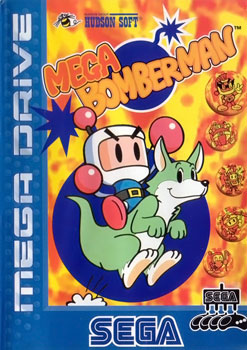
Bomberman '94 is a video game from the Bomberman series which was developed and published by Hudson Soft for the PC Engine and released on December 10, 1993, in Japan. It was later re-developed by Westone and re-published by Sega as Mega Bomberman on the Sega Mega Drive/Genesis in 1994 in other areas. The PC Engine Bomberman '94 was later released outside Japan through the Virtual Console and the PlayStation Network.

Piko Interactive LLC is an American video game publisher based in San Antonio, Texas. Founded in early 2013 by Eli Galindo, the company focuses on physical re-releases of games from older video game consoles and digitally released ports to newer systems.

Coffee Crisis is a game for the Sega Genesis/Mega Drive and Microsoft Windows, developed and published by Pittsburgh-based company Mega Cat Studios. The console version was released on February 24, 2017, as a physical cartridge with printed manual.

The Mega Sg is a home video game console manufactured by Analogue, released in 2019. It runs games developed for the Sega Genesis, Master System, Game Gear and SG-1000, systems released by Sega in the 1980s and early 1990s during the fourth generation of consoles. Rather than emulate games, the Mega Sg uses FPGA chips that replicate the original system hardware.
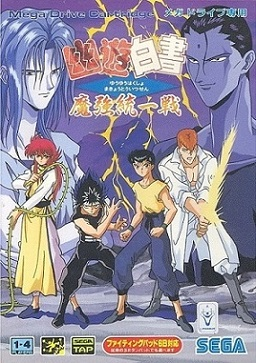
Yu Yu Hakusho Makyō Tōitsusen is a 1994 fighting game developed by Treasure and published by Sega for the Mega Drive. It is based on the manga series Yu Yu Hakusho by Yoshihiro Togashi. The plot follows the protagonist Yusuke Urameshi, who is tasked by the ruler of the afterlife with solving detective-style cases involving both humans and demons threatening the living world. The story begins to focus heavily on martial arts battles as it progresses.
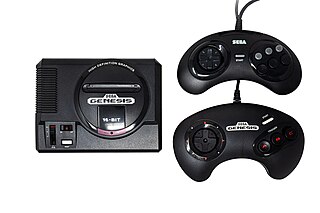
The Sega Genesis Mini, known as the Mega Drive Mini in regions outside of North America, is a dedicated console modeled on the Sega Genesis. The Mini emulates the original console's 16-bit hardware, and includes 42 games made available through emulation software by M2. It was released in North America and Japan in September 2019 and in Europe and the Middle East in October 2019. A follow-up, Sega Genesis Mini 2, was released in October 2022 and includes 60 games from the Genesis and Sega CD.
Mega Cat Studios is an American video game development and publishing company located in Pittsburgh, Pennsylvania, founded in 2015 by James Deighan, Nick Mann and Zack Manko.

The Evercade is a handheld game console developed and manufactured by UK company Blaze Entertainment. It focuses on retrogaming with ROM cartridges that each contain a number of emulated games. Development began in 2018, and the console was released in May 2020, after a few delays. Upon its launch, the console offered 10 game cartridges with a combined total of 122 games.

Tänzer is a 2019 hack and slash action-platform video game developed by Mikael Tillander and originally published by Mega Cat Studios for the Sega Mega Drive. In the game, players assume the role of a ballerina whose body was transformed to fight against enemies in a post-apocalyptic setting. The title was crowdfunded through Kickstarter, being first released in 2019 for the Mega Drive and has since been re-released as part of the Mega Cat Studios – Collection 1 compilation for Evercade in 2020.

Xeno Crisis is a 2019 multidirectional shooter homebrew video game developed and published by Bitmap Bureau for the Sega Mega Drive/Genesis, Linux, macOS, Microsoft Windows, Nintendo Switch, PlayStation 4, and Xbox One. It was later ported to Dreamcast, PlayStation Vita, Neo Geo, Neo Geo CD, Nintendo 64, GameCube, and Super Nintendo Entertainment System. The premise takes place in Outpost 88, a scientific research facility overrun by aliens. The facility sent a distress signal, leading Commander Darius dispatching space marines John Marsh and Sarah Ridley to confront the aliens. Gameplay revolves around players defeating enemies, rescuing survivors, collecting in-game currency for upgrades, and facing against bosses.

Paprium is a side-scrolling beat 'em up video game for the Mega Drive developed by studio WaterMelon and released in 2020. It was announced as part of a crowd-funding pitch in 2012. Development took eight years, with little to no communication with game's backers or the press, and was widely considered to be vaporware.





















